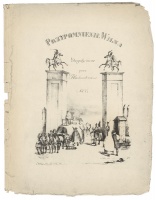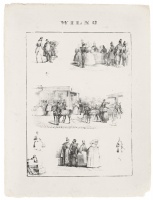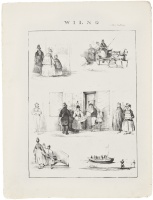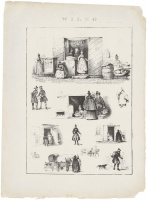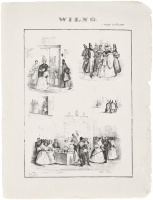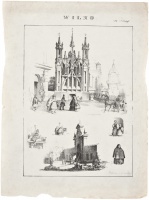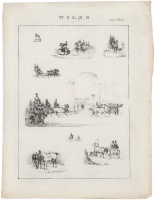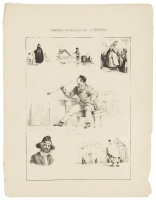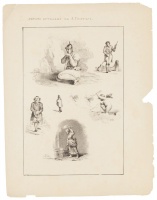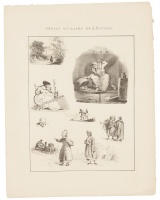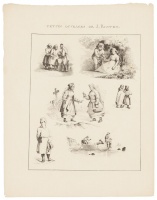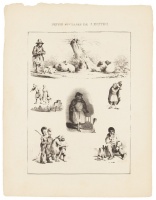
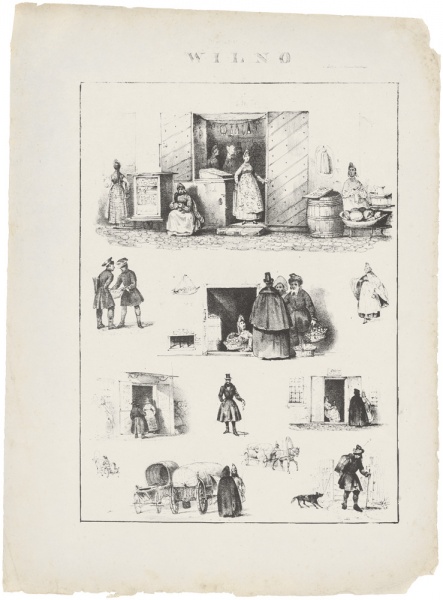

A lithograph from the portfolio ‘Recollections of Vilnius’, III,
| Author: |
Kazimierz Bachmatowich (1803/8–1837)  |
| Created: | 1837 |
| Material: | paper |
| Technique: | litograph |
| Dimensions: | 35 × 26 cm |
| Signature: | inscription: WILNO w Litog J Oziębłowskiego |
Every page of ‘Recollections of Vilnius’ presents a different place and occasion: one takes us back to the Midsummer Fair in Cathedral Square, another to some food shops, a third to the sacred space by St Anne’s Church and the gates to the Bernardine Monastery, which were removed in 1869, a fourth to a charity fair in support of the needy, and a fifth to the gates into the governor-general’s residence, approached by the governor in a caleche. The artist wittily caught the characters of the people, their movements, postures and clothes. He expressed the Biedermeier style, the customs and the everyday life of people at that time. Bachmatowicz often depicted scenes showing the work of artists and onlookers. He made drawings of Isidor Weiss’ shop of prints and paintings, a stall with prints at the Midsummer Fair, surrounded by curious bystanders, pictures donated to a charity lottery, and an artist painting from nature by the gates to the Bernardine Monastery. Art did not play a major role in the life of the people of Vilnius, but Bachmatowicz was very concerned about the public’s regard for it.
Text author Laima Laučkaitė
The views of Vilnius by Kazimierz Bachmatowicz (1803/8–1837) contain people and not buildings. He depicted an open and lively city. The portfolio for which he lithographed his drawings himself is like a visual diary. In this sense, it recalls ‘Notes about Druskininkai’, a manuscript written slightly later by Vasiliy von Rothkirch (1819–1891), except that Bachmatowicz was kinder to his heroes and less ironic. His characters are a gallery of townsmen, men and women, old and young, wealthy and poor, Lithuanians, Poles, Russians and Jews. In all seven sheets of the portfolio, life moves easily from indoors on to the street, with people scurrying by, vendors and maids, soldiers and beggars. The artist paid a lot of attention to people’s appearance: their clothes, accessories and hairstyles. Naturally, these detailed genre scenes cannot be portrayed without objects, as a necessary and complementary part of the surroundings.
Text author Giedrė Jankevičiūtė
Source: Law firm Valiunas Ellex art album VILNIUS. TOPOPHILIA II (2015). Compiler and author Laima Laučkaitė, OBJECTS ON SHOW (2017). Compiler and author Giedrė JankevičiūtėExpositions: "Vilnius Time", 5 June 2023 – 1 May 2024, Lithuanian Art Centre TARTLE (Užupio St. 40, Vilnius). Curators Ieva Burbaitė and Emilija Vanagaitė.







